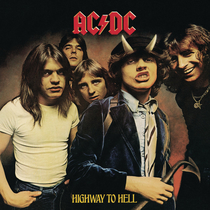
The title is often attributed as a phrase AC/DC's guitarist Angus Young used to describe touring in America. There is a much more literal explanation, however. "Highway to Hell" was the nickname for the Canning Highway in Australia. It runs from where lead singer Bon Scott lived in Fremantle and ends at a pub/bar called The Raffles, which was a big rock and roll drinking hole in the 70's. As Canning Highway gets close to the pub, it dips down into a steep decline: "No stop signs... Speed limits... Nobody gonna slow me down."So many people where killed by driving fast over that intersection at the top of the hill on the way for a good night out, that it was called the highway to hell, so when Bon was saying "I'm on the highway to hell" it meant that he was doing the nightly or weekly pilgrimage down Canning Highway to The Raffles bar to rock and drink with his mates: "Ain't nothing I would rather do. Going down, party time, my friends are gonna be there too."Vocalist Brain Johnson explained to The Metro October 15, 2009: "It was written about being on the bus on the road where it takes forever to get from Melbourne or Sydney to Perth across the Nullarbor Plain. When the Sun's setting in the west and you're driving across it, it is like a fire ball. There is nothing to do, except have a quick one off the wrist or a game of cards, so that's where Bon came up with the lyrics."This was the first AC/DC song to chart in the US. It helped drive huge sales for the Highway to Hell album, which has sold over seven million copies in America. It was AC/DC's sixth album, and their last with vocalist Bon Scott, who died in 1980 from excessive drinking. Their next album, Back in Black, was dedicated to him.Mutt Lange, who has also worked with the Cars, Bryan Adams, and Def Leppard (and Shania Twain, who he was married to from 1993 - 2008), produced the album. Lange took over after failed sessions with Eddie Krammer, who had a solid resumé that included work with Led Zeppelin and Jimi Hendrix, but whose procedural style didn't work for AC/DC. Lange was able to enhance the band's sound without altering their essence. On this song, he added robust background vocals to the choruses - something AC/DC didn't do on their previous efforts. This and other production refinements helped made the song a hit and expand their audience.Recorded in London, Highway To Hell was the first AC/DC album recorded outside of Australia. The album cover had Angus Young on the cover wearing his schoolboy uniform and devil horns. Some religious groups found this quite offensive.Serial killer Richard Ramirez claimed the album compelled him to murder. He believed AC/DC stood for "Anti Christ/Devil's Child."In the 2003 film School of Rock Jack Black teaches the riff to the guitarist in the band. It was also featured in the 2000 movie Little Nicky, starring Adam Sandler.
See all
0
0

An early AC/DC track, this one plays off their band name, keeping with the electricity theme as Bon Scott sings about their "high voltage rock and roll." The band would produce many more songs about rock and roll over the next four decades, and these tracks were often the showstoppers at their concerts.AC/DC's first album, released in 1975 only in Australia, was called High Voltage, but this song wasn't part of it. "High Voltage" the song was released as a standalone single, reaching #6 in Australia and goosing sales of the album.Another Australia-only album (T.N.T.) followed later that year, and in 1976 tracks from these first two albums were compiled, along with this song, for another album called High Voltage that was given international release and set the stage for the band's rise to stardom. The "High Voltage" single was also released internationally in 1976, and a video was made to promote the song.This was the first AC/DC song on which drummer Phil Rudd played.
See all
0
0
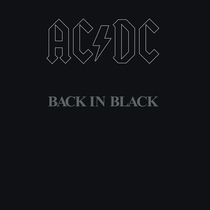
AC/DC recorded this a few months after lead singer Bon Scott died of acute alcohol poisoning after a night of heavy drinking. The album is a tribute to him, and futures his replacement, Brian Johnson, on vocals.This is the first track on Back in Black, AC/DC's biggest album. In tribute to Bon Scott, it starts off with the bell tolling 4 times before the guitar riff comes in. The bell rings another 9 times, gradually fading out. When played live, Brian Johnson would strike the bell.You don't honor Bon Scott's memory with a bell from a sound effects reel, so the band needed a real bell, and a big one. The first attempt to record the bell took place in Leicestershire, England at the Carillon and War Memorial Museum. This proved insufficient, so the band commissioned a one-ton bronze bell from a local foundry that they would use on stage.The bell wasn't ready in time for recording, however, so the manufacturer (John Taylor Bellfounders) arranged for them to record a similar bell at a nearby church. According to engineer Tony Platt, that didn't go well, as there were birds living in the bell, so when they rang it they also got the fluttering of wings (the birds would retreat back inside the bell after the toll).They decided to use the bell that was in production, so they borrowed a mobile recording unit owned by Ronnie Laine and wheeled it into the foundry. The bell was hung on a block and tackle and struck by the man who built it.Because of the harmonics, bells are not easy to record, so Platt placed about 15 microphones with various dynamics in different locations around the foundry to record the sounds. Once it was on tape, Platt brought the recordings to Electric Lady Studios in New York, where he and Mutt Lange chose the right combination of bell sounds, put a mixer together, and slowed it down to half speed so the one-ton bell would sound like a ominous two-ton bell. This was integrated into the mix, and the song was completed. Listeners with very sharp ears will notice that the bell when chimed live is an octave higher than when it is on the recording.This was one of the first songs regularly played as entrance music for a Major League Baseball relief pitcher. In the '90's, the bell signaled the entrance of San Diego Padres relief pitcher Trevor Hoffman. This bit of home team intimidation was copied through out the league, most famously by the New York Yankees, who appropriated Metallica's "Enter Sandman" as Mariano Rivera's entrance music.
See all
0
0

This song is about a guy trying to buy his buddy a drink, which might seem like poor taste considering their lead singer, Bon Scott, drank himself to death just months before the album was released. His replacement, Brian Johnson, stayed true to Scott's form by writing about topics consistent with AC/DC's ethos, and that includes drinking. Many bands would have released a heartfelt ballad to honor a fallen member, but that's not the AC/DC way - Bon would have wanted them to rock out, and that's exactly what they kept doing.
See all
0
0

Many of the songs on Rock or Bust find the Aussie veteran rockers recalling past memories. "Hard Times goes back to when we were younger and touring, and we didn't have much money," Angus Young told the Sun. "It's a good old song, rather than a modern day reflection."
See all
0
0
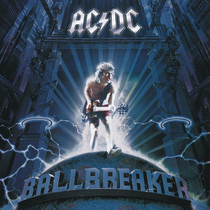
This is another AC/DC song which lyrical influences in Chuck Berry, an expert at making se**ual references seem very obscure, to the point of being innocent. This song is about a girl who t**ns the guy ** so much that he gets b*g e***tion ie, "hard."The lyrics mention a "Hellevator" (or "Hell elevator"). Like a "Highway to Hell," this would be a transportation method to Hell. AC/DC was fond of incorporating something earthly and physical with Hell in their lyrics.
See all
0
0

Rock or Bust is AC/DC's 1st album without founding member and rhythm guitarist Malcolm Young, who left the band in 2014 for health reasons. However a few of Malcolm's riffs and song fragments were factored into the new album and its tracks are still credited to Young-Young. Angus Young told Rolling Stone that both this cut and "Play Ball" have "bits that have hung around for a long time, even further back" than Black Ice.
See all
0
0

To "go down" is a se**ually explicit reference that needs no elaboration here. This song was apparently inspired by a well known groupie called "Ruby Lips" who Bon Scott knew of, and very likely "knew" in the Biblical sense too.
0
0
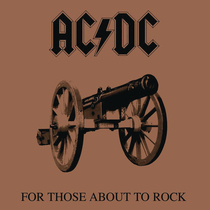
The phrase that this song's title is based on is "For those about to die..."This is a variation on the phrase "We who are about to die salute you," which is what the Roman gladiators would say to the high rulers (typically the emperor), before fighting to the death in the arena.AC/DC guitarist Angus Young got the idea after reading a book Bon Scott gave him about the gladiator games in ancient Rome. Young remembers the book as 'For Those About To Die We Salute You by Robert Graves', but Graves never wrote a book with that title. It's likely that the book was Those About To Die by Daniel Mannix.
See all
0
0

The song is described in Paul Stenning's biography of the band as "a tale of struggle as a rock 'n' roller on welfare". Although the Young brothers came from a solid if not prosperous family, vocalist and lyricist Bon Scott had seen some hard times.A detailed account of Bon's early career is given in Clinton Walker's dedicated biography, the aptly named Highway to Hell. Like most rock stars, Bon was not an overnight success. His first band, The Spektors, played the Perth circuit in 1965 merging with The Winztons the following year to form The Valentines. When the band moved to Melbourne they fell on hard times; in Sydney they were"strapped for cash, pooling funds to eat fish 'n' chips." The Valentines broke up in August 1970, and Bon was asked by Bruce Howe, the leader of Fraternity, to join his group, but even though the band had a wealthy backer, an Adelaide entrepreneur named Hamish Henry, they were to spend a disastrous 18 months in the UK before splitting up. On his return to Adelaide, Bon was involved in a horrific road crash that nearly cost him his life, and when he auditioned for AC/DC he was in the process of separating from his wife. For him if not for the Young's, "Down Payment Blues" was a song that was clearly written from the heart.
See all
0
0
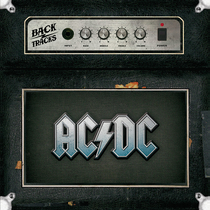
AC/DC lead guitarist Angus Young got the song title from the 1962 animated cartoon series Beany and Cecil. The show first aired on ABC Television and only ran for one season until the 26 episodes shown were cast as repeats for the next five years until it was recreated in 1968. The specific inspiration for the song name was the cartoon's main villain, "Dishonest John," who would carry around a business card that said, "Dirty Deeds Done Dirty Cheap. Holidays, Sundays, and Special Rates."
See all
0
0
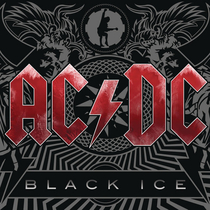
This old school blues cut, along with the rest of the album, was produced by Brendan O'Brien ( Rage Against the Machine, Stone Temple Pilots,. Pearl Jam) at the Warehouse Studio in Vancouver, Canada.
0
0

AC/DC recorded this for Arnold Schwarzenegger movie The last action hero. It is heard at the start of the end credits.Before he became famous or was even in a band, System of a Down bassit Shavo Odadjian appeared in the music video.
0
0

Rock or Bust is AC/DC's first album without founding member and rhythm guitarist Malcolm Young, who left the band in 2014 because of dementia. His brother Angus recalled to Rolling Stone playing this song's guitar hook "a few times" for Malcolm. He would say, 'That's a good one. Hang on to that."
See all
0
0

Guitarist Malcolm Young recorded his guitar part using Amplitude amp modelling software.
0
0

This was released five months after lead singer Bon Scott died. The song is a tribute to Scott, and the lyrics, "Forget the hearse 'cause I never die" imply that he will live on forever through his music. With Brian Johnson on lead vocals, the Back in Black album proved that AC/DC could indeed carry on without Scott.Interesting fact:Johnson had been in a group called Geirdie, which Bon Scott saw in 1973. After that show, Scott talked up the Geordie lead singer to his band mates, and in 1980 when they were looking for a replacement, AC/DC's producer, Mutt Lange, suggested him. At the time, Johnson was working as a windshield fitter and had recently reunited Geordie.
See all
0
0

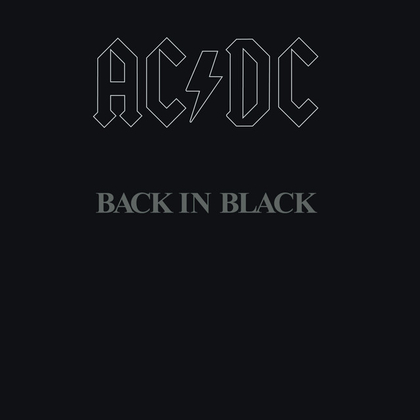
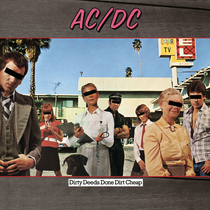


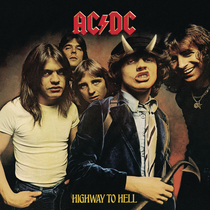


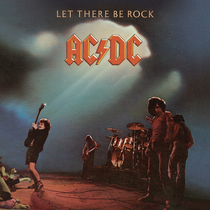
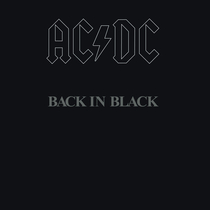
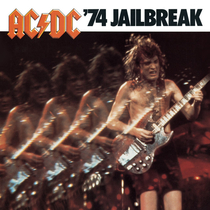


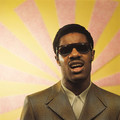
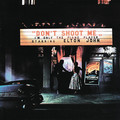

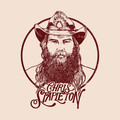
Comments